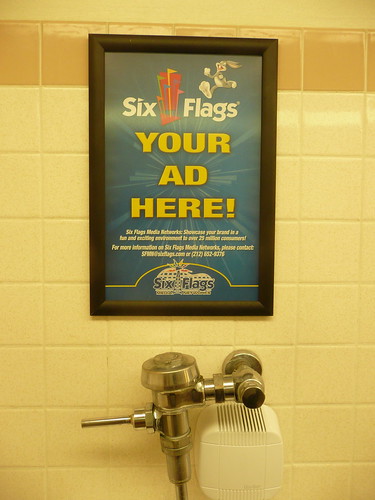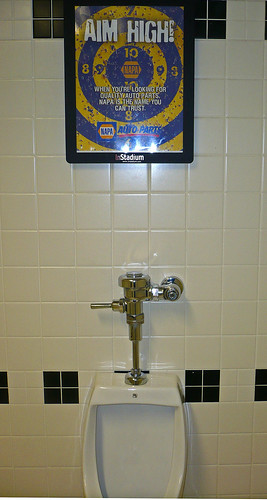Day 15/150

photo by "Stuck in Customs"
Happily reading my new library book: Graphic Design, Referenced: A Visual Guide to the Language, Applications, and History of Graphic Design
I came across the First Things First Manifesto, and then the First Things First Manifesto 2000 revision. I find Times Square--hence the photo above--exemplifies "a mental environment so saturated with commercial messages that it is changing the very way citizen-consumers speak, think, feel, respond and interact." If you've ever been there you'll be overwhelmed by the commerial advertising, but you don't have to go further than your local downtown, or any mall, to have a similar experience. You almost get it walking out of house. Looking around my own house I sometimes get that feeling indoors too!
Look no further than Facebook and see how much all of our lives center on talking about or interacting with brands? Graphic designers and the marketing industry as a whole have done their jobs well and now it's a challenge to go through any conversation with anybody about anything without mentioning a brand. Considering that the original manifesto was written in 1964, it's probably not surprising that with designers continuing to foster hyper consumerism for nearly 50 years of knowing better that it is impossible to look upon any man-made landscape that has gone unbranded or underutilized for it's marketing potential.

photo by ATIS547

photo by agross96
We literally can not look in any direction, or converse on any topic of cultural or practical significance, or even so much as contemplate our lives for long without selling, or being sold, something. I haven't been able to get through this blog post (see Facebook mention and book advertisement above.) We do it without thinking, and almost without notice, don't we?
If the First Things First Manifesto 2000 was relevant at the time, then it's just in this past ten years that the vision of the original authors has truly come to fruition, that we citizen-consumers have changed how we think, feel, respond and interact. That change has happened, as it was happening in 2000, and was bound to happen in 1964.
Given that the change has happened, what do we --we graphic designers-- do now? What is our responsibility now? If we do as the signatories before us have done and dedicate ourselves to more worthy pursuits, if we design on behalf of more worthy causes, do we not just further contribute to this cacophony of visual communication and accompanying mental shift? But then should we refuse to design, refuse to fill up all the blank spaces in our world with one message or another, will there ever be the relief of a blank wall, or a simple, unbranded object?
Neither course will give remedy, I'm afraid. In fact, there may be no remedy within our means. I wonder, though, if we may yet bear some responsibility to engage in counter-advertising? I wonder if we might not use our talents to rebel, to use what we know to undo some of the damage. Can we counter the messages we've instilled in the public? Can we say, "you do not need to call now," or "you do not deserve a break today"? Shouldn't we feel obliged to take our knowledge and understanding and deprogram ourselves and the public, even just a little?
How shall we write the new First Things First manifesto? Maybe it will be called the Now That We're Here manifesto instead.
The "150 Days" series is a post-per-day review of design topics to help me brush up on skills and become a better designer and new media producer as part of my career reboot.
No comments:
Post a Comment